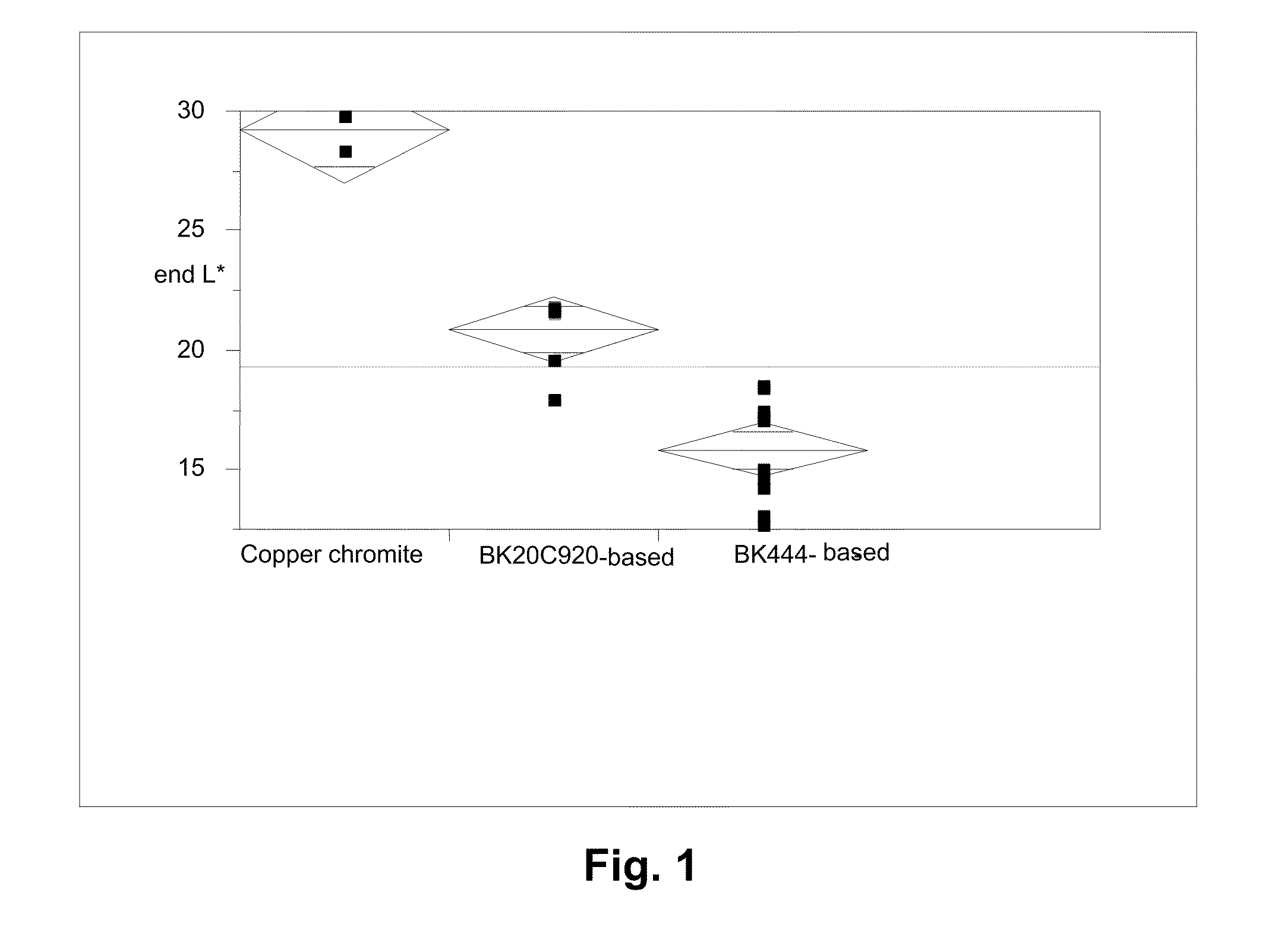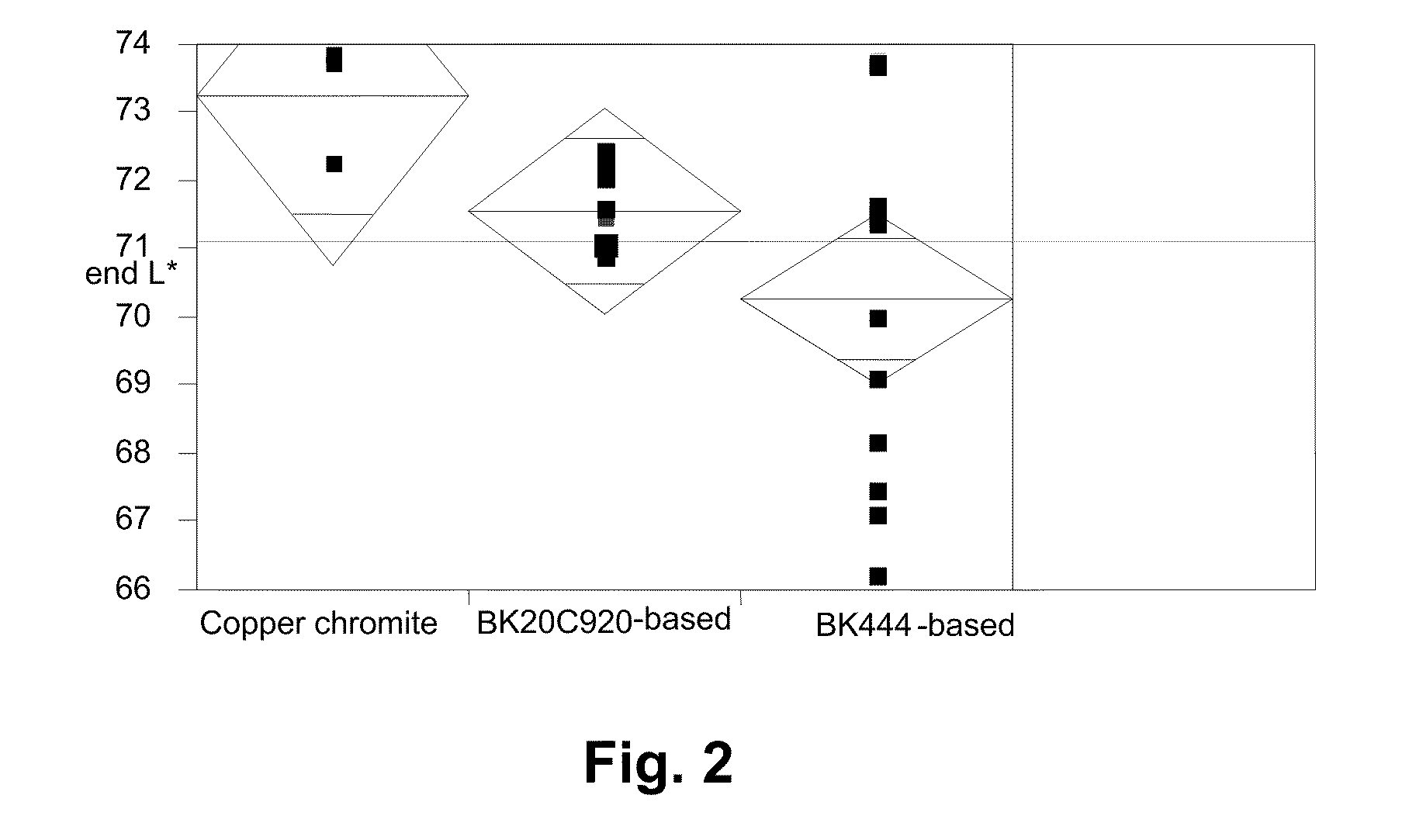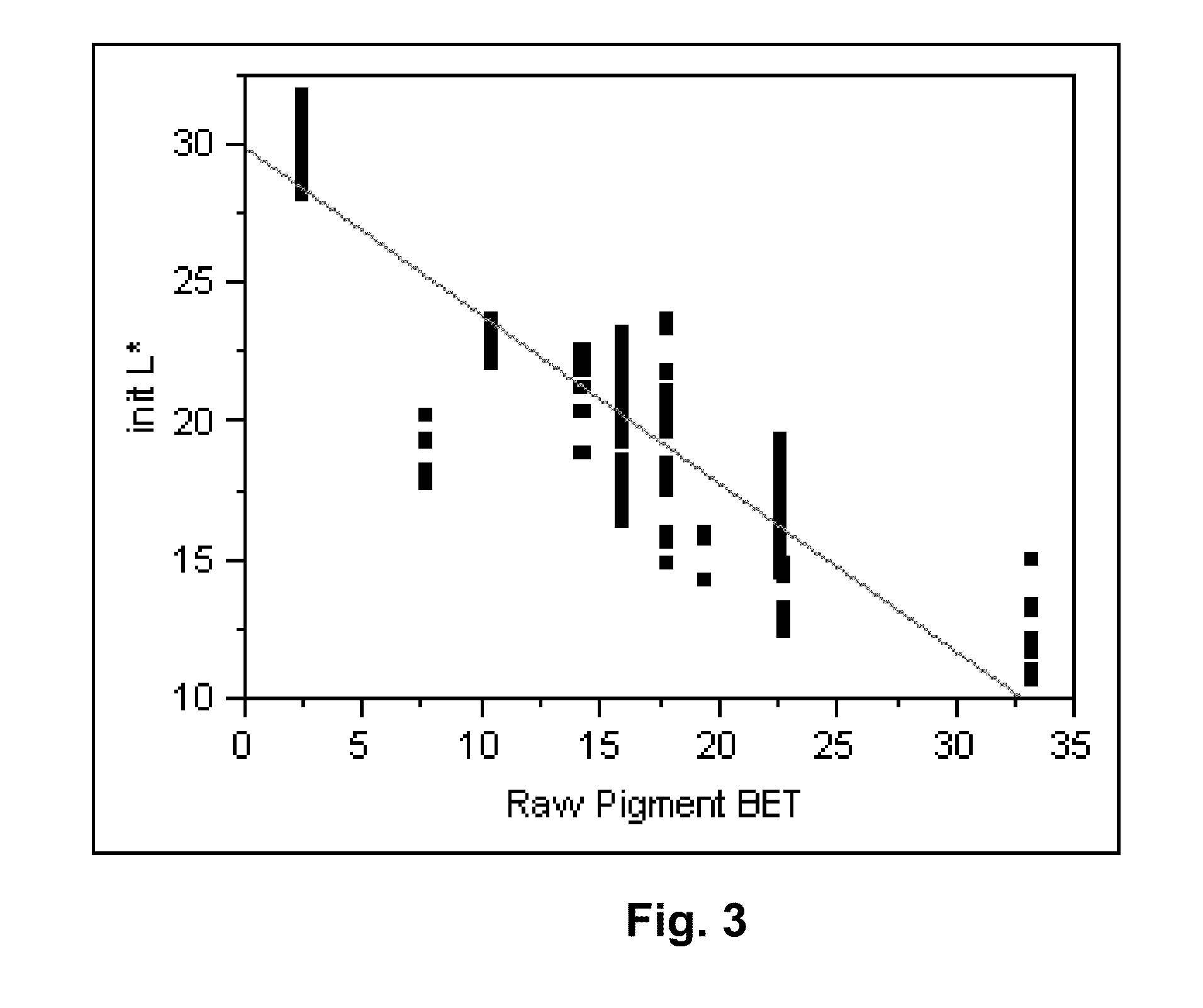Electrophoretic particles, and processes for the production thereof
a technology of electrophoretic particles and electrophoretic media, applied in the field of electrophoretic particles, can solve the problems of gas-based electrophoretic media being susceptible to the same types of problems, their widespread use, and inadequate service life for these displays
- Summary
- Abstract
- Description
- Claims
- Application Information
AI Technical Summary
Benefits of technology
Problems solved by technology
Method used
Image
Examples
example 1
Preparation of Polymer-Coated Inorganic Pigment Particles
[0047]The raw pigments (Shepherd Black 444 and Shepherd Black 20C920) were milled in water to reduce the average particle size to about 0.3 μm for the former pigment and about 0.5 μm for the latter. The milled pigments were then surface functionalized using N-[3-(trimethoxysilyl)propyl]-N′-(4-vinylbenzyl)ethylenediamine bishydrochloride (obtained from United Chemical Technologies) using substantially the same procedure as in the aforementioned U.S. Pat. No. 6,822,782, Example 26. The amount of surface functionalization achieved was estimated by thermogravimetric analysis, which indicated the presence of 4-10% of volatile (organic) material for Black 444 and 1.1-1.3% of volatile (organic) material for Black 20C920.
example 2
Preparation of Electrophoretic Media Containing Polymer-Coated Inorganic Pigment Particles
[0048]Standard solutions of the two black pigments produced in Example 1 and of various other components of an electrophoretic medium internal phase were prepared and mixed in a 250 mL plastic bottle to form an internal phase as follows:
Black 444Black 20C920Componentbased pigmentbased pigment55% Black Pigment / Isopar E25.88 g41.14 g60 wt % polymer-coated titania / 106.77 g 94.29 gIsopar E:13 wt % polyisobutylene / Isopar E: 7.73 g 6.7 g10 wt % Solsperse 17K / Isopar E:23.49 g19.01 gIsopar E:10.12 g14.86 g
[0049]A solution of gelatin (10 g) in deionized water (240 g) having a temperature of 42.5° C. was prepared in a 500 mL jacketed reactor and equipped with a stirrer and a dropping funnel. Under vigorous stirring, the internal phase prepared as described above was added over a period of 1 minute using an addition funnel with an outlet below the surface of the gelatin solution. Immediately after this ad...
example 3
Conversion of Capsules to Experimental Displays
[0050]The capsules prepared in Example 2 were converted to a slurry of capsules in a polymeric binder as follows. The capsules were allowed to settle for at least one hour, and some but not all of the excess water was poured off. The bottle containing the capsules was shaken to re-disperse the capsules in water and the pH of the dispersion adjusted to 9.0-9.5 with ammonium hydroxide. The bottle was again shaken to re-disperse the capsules and capsule solids were measured by thermogravimetric analysis. The capsules were concentrated by centrifugation and supernatant liquid poured off. Sufficient polymeric binder to produce and 8:1 w / w capsule to binder ratio, hydroxypropylmethylcellulose (0.2% of the slurry mass), Triton X100 surfactant (0.03% of the slurry mass) and water were added to produce a slurry containing 33% by weight of capsule solids, and the resultant slurry vigorously shaken to disperse the concentrated capsules from the bo...
PUM
 Login to View More
Login to View More Abstract
Description
Claims
Application Information
 Login to View More
Login to View More - R&D
- Intellectual Property
- Life Sciences
- Materials
- Tech Scout
- Unparalleled Data Quality
- Higher Quality Content
- 60% Fewer Hallucinations
Browse by: Latest US Patents, China's latest patents, Technical Efficacy Thesaurus, Application Domain, Technology Topic, Popular Technical Reports.
© 2025 PatSnap. All rights reserved.Legal|Privacy policy|Modern Slavery Act Transparency Statement|Sitemap|About US| Contact US: help@patsnap.com



